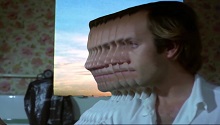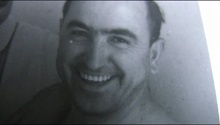Jonathan Cremades
My name is Jonathan Cremades and I was born in Valencia in 1985. Animation, documentary, experimental, video clips, video-collage, found footage and live cinema are some of the keywords characterizing my audiovisual practice. I graduated in Audiovisual Communication at the Polytechnic College in Gandía and in 2013 I gained my master’s degree in Artistic Production at the Art School of the Polytechnic University of Valencia with a thesis on video sound collage, and made the piece “Arrebatado”. I like the way collage lets you decontextualize images, from whatever source, and then manipulate them and put them together again in a different way. In this field, I find the work of Virgil Widrich and Vicki Bennett mind-blowing.
My artistic activity also includes music. I’m self-taught and for some years I’ve been part of various projects that allow me to experiment and learn how to use different tools, usually synthesizers, keyboards and effects pedals. I love loops, reiteration and psychedelia. These two facets feature strongly in Tarántulas Pentium, a project of mine that brings together video and sound, live.
I currently work as a freelance producer, camera operator and editor, teaching audiovisual workshops and developing my own projects.
The heterogeneous body of work of Jonathan Cremades offers a host of clues as to his interests: music, video clips, collage and mixed formats, visual experimentation, found footage, and the interrelation of the analogue and the digital are just some of them.
With Arrebatado (2013), Cremades offers a fitting tribute to filmmaker Iván Zulueta, and he does so by appropriating and reinterpreting images from Arrebato, Zulueta’s most representative film. In Arrebatado, the modifications to the colour and the recourse to pauses, the rhythmic visual repetitions and the use of music bring about a process by means of which the narrative becomes increasingly abstract and the focus of attention shifts to more formal aspects of the work, turning the filmic image into a video collage that prompts us to reflect on the very nature of the images, as Zulueta’s film did originally, but in a very different way. In Arrebatado, the rate at which the images succeed each other, accompanied by the persistent sound, rises to a crescendo, catharsis in the form of a film buff’s intimate confession. The aspect of confession is also somehow present in Antonio en 8mm (2009), a documentary that Cremades dedicates to his grandfather, whose memory he can only reconstruct through photographs and videos, not directly, as Antonio died when he was just five. Jonathan begins the video with this confession: he can’t remember his grandfather. He can’t remember his voice, his face or his gestures. The abundant Super 8 material that Antonio recorded over the years appears on the screen along with old photographs, offering us a clue to the possible links between him and his grandson Jonathan: their liking of, or should I say obsession with film, with trying to capture reality and control time, slowing it down or even stopping it at will.
Jonathan reconstructs his grandfather’s story using different images, snippets of everyday life captured with an old camera, and the stories that his father told. It is a story that includes the reminiscences of a camera that vampirizes everything that comes before it, the surrender of the subjects as they look into the lens, or the ability of the device to evoke ghosts. The appearance of an old box full of Super 8 reels prompted Jonathan’s portrait of his grandfather, making Antonio en 8 mm a twofold, personal and meta-cinematographic diary, as the relations that the characters establish with the cinema and the image somehow delimit their relations with the world and with everyone around them.
But experimental video, cinematographic collage and the film diary are not Cremades’s only interests. A defender of the creative freedom allowed by the world of music, he has also made works like the video clip for the song Ambición (2015) by Aullido Atómico; using the rotoscope and hand-colouring over 2,000 black and white photocopies, he manages to convey the freshness and dynamism of the song. With pencils and marker pens, like the ones we used when we were small, before we grew afraid of venturing beyond the lines marked by the colouring books to which we devoted so much of our childhood.
Marla Jacarilla (visual artist and writer)




